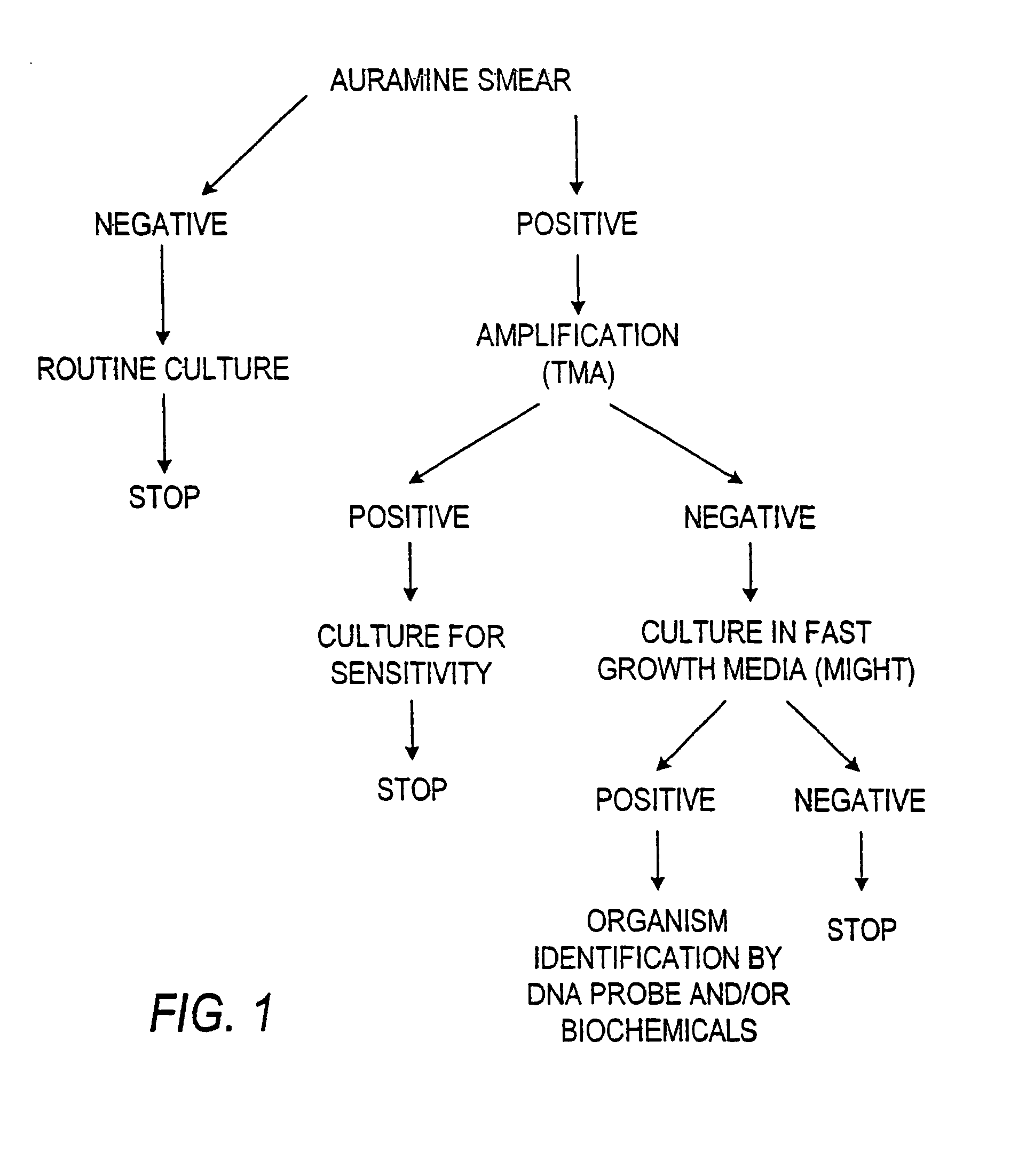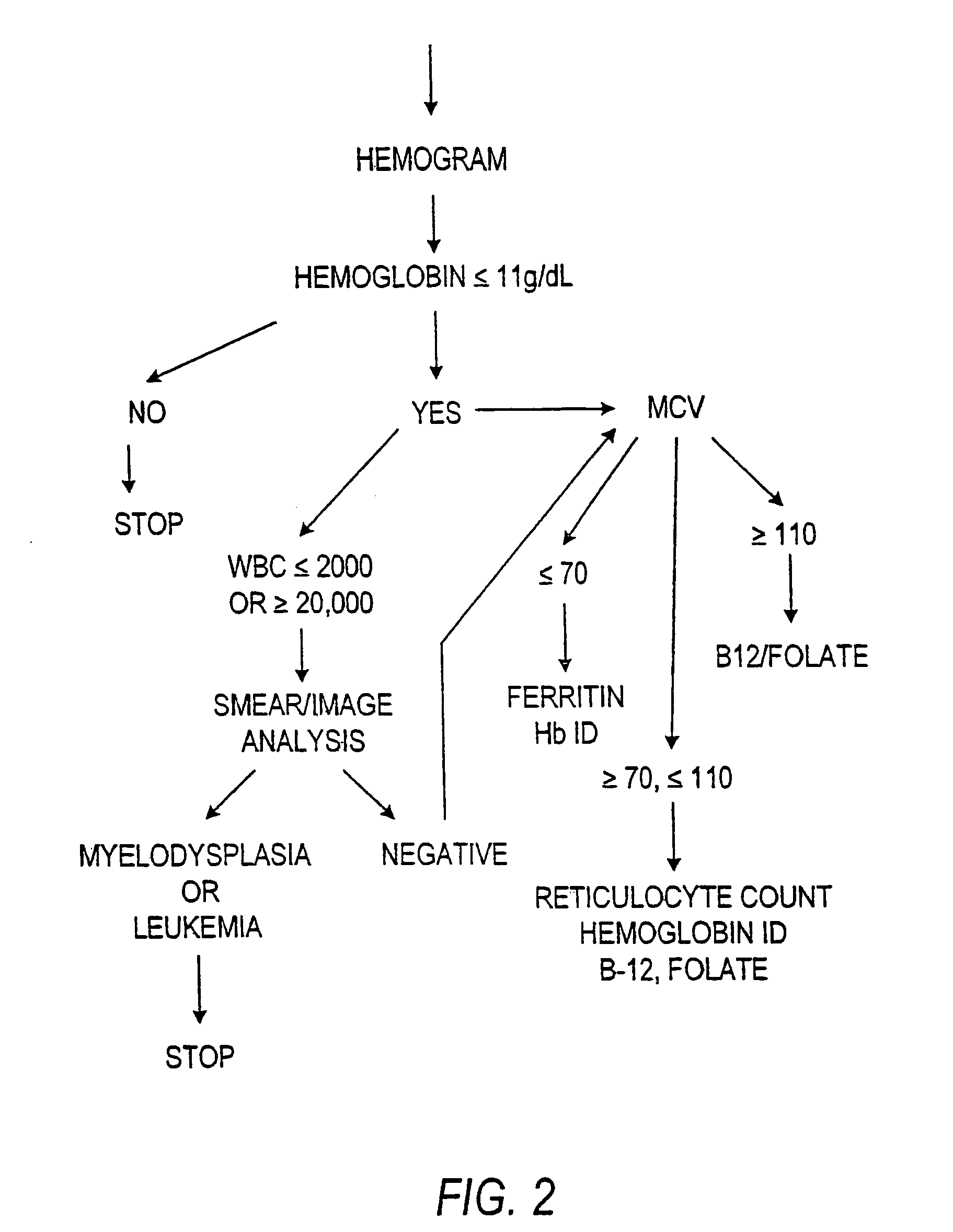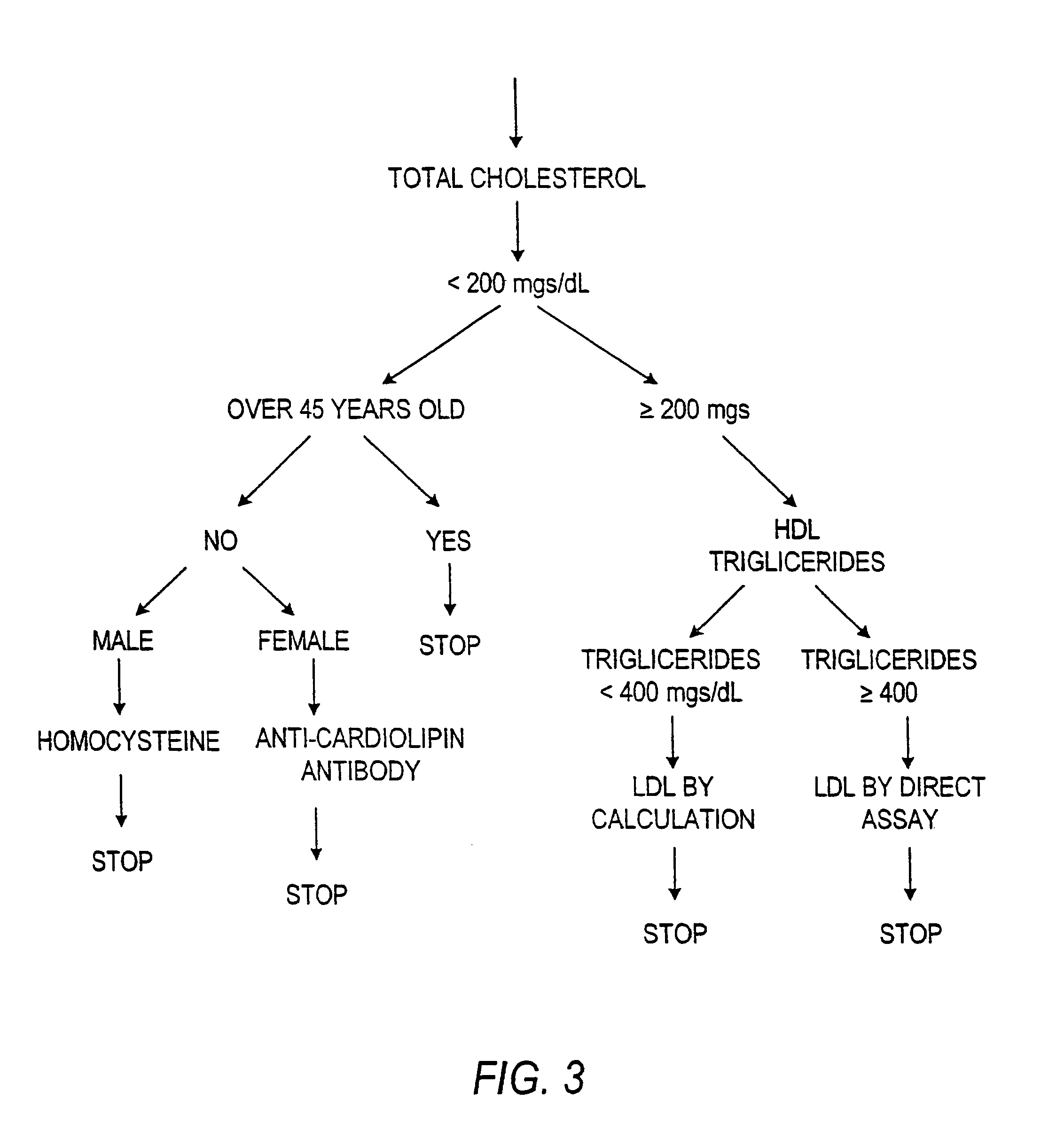Algorithmic testing in laboratory medicine
a laboratory medicine and algorithm technology, applied in the field of programable automation of systems and devices, can solve the problems of indiscriminate number of clinical tests to be ordered and carried out, substantial cost savings that have not had a significant impact on the overall cost of medical care, etc., and achieve the effect of accelerating the rate and efficiency, and reducing the number of clinical tests
- Summary
- Abstract
- Description
- Claims
- Application Information
AI Technical Summary
Benefits of technology
Problems solved by technology
Method used
Image
Examples
example
[0350]The manager of the chemistry section of the laboratory wants to automate the ordering of follow-up LDH ISO enzyme (LDH ISOS). Currently the technologists must remember to order LDH ISOS for all patients if the result of the LDH is high. The established value regarded as “high” is 100. Three doctors however, have different criteria for high. Doctor Jones wants to order the LDH ISOS automatically if the LDH is greater than 95. Doctor Brown wants the LDH ISOS ordered if the LDH is greater than 92, and Doctor Carson considers 97 to be high.
[0351]The following questions should be addressed as one develops a solution:[0352]Can one combine all of these criteria into one rule?[0353]How does one address doctor-specific values?
Solutions to Example
[0354]All of the criteria mentioned can be combined. There are several ways to solve the problem presented in Example 1.
[0355]If you can use the admitting doctor to check the ordering doctor, use the Patient Demo premise definition function, as...
PUM
| Property | Measurement | Unit |
|---|---|---|
| Nanoscale particle size | aaaaa | aaaaa |
Abstract
Description
Claims
Application Information
 Login to View More
Login to View More - R&D
- Intellectual Property
- Life Sciences
- Materials
- Tech Scout
- Unparalleled Data Quality
- Higher Quality Content
- 60% Fewer Hallucinations
Browse by: Latest US Patents, China's latest patents, Technical Efficacy Thesaurus, Application Domain, Technology Topic, Popular Technical Reports.
© 2025 PatSnap. All rights reserved.Legal|Privacy policy|Modern Slavery Act Transparency Statement|Sitemap|About US| Contact US: help@patsnap.com



